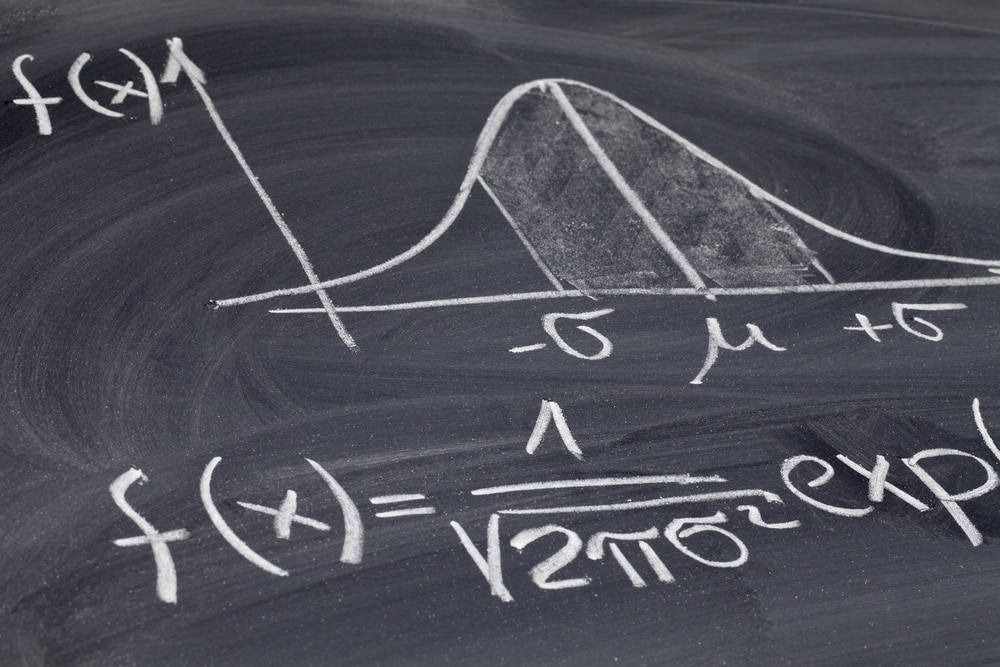- What is Recession?
- The Great Recession of 2008
- How did the 2008 Recession Happen?
- Some Important Days at a Glance
- What was the Effect on the Common People of the Country?
- How Industries are Affected by the Great Recession of 2008?
- Recovery from the Great Recession of 2008
- Positive Takes From The Recession
- The Incident of Wall Street 2011
- Learnings from the Great Recession of 2008
- What is Recession?
- The Great Recession of 2008
- How did the 2008 Recession Happen?
- Some Important 2008 Recession Days at a Glance
- What was the Effect on the Common People of the Country?
- Recovery from the Great Recession of 2008
- Positive Takes From The Recession
- The Incident of Wall Street 2011
- Learnings from the Great Recession of 2008
“It’s a recession when your neighbor loses his job; it’s a depression when you lose your own.”
― Harry S. Truman (Global Economist)
What is Recession?
Recession is one of the most significant macroeconomic terms which refers to a massive decline in national as well as the international economy. If a recession occurs within a limited region, it is known as a regional recession. On the other hand, if a recession affects more than 10 to 20 countries, it is known as a global recession.
Recession has been recognized as an economic decline through 2 consecutive financial quarters. When the GDP declines gradually, it shows that unemployment has started in a country. We can say that the initial effect of the recession directly hits the rate of GDP. However, a recession declines the economic growth, wholesale-retail, employment, and industrial production of a country.
The Great Recession of 2008
The term Great Recession represents a vital decline in international economics during the period of late 2000s. This crucial time is considered the most significant downstream which led to a global depression. In the year 2007, the Great Recession started in a wide range of the United States. It became a massive economic disaster during the period of 2008 to 2009. A large amount of mortgage-backed securities and derivatives lost their values surprisingly. At the same time, economical deterioration began, especially when the housing market of the USA went from boom to bust.
How did the 2008 Recession Happen?
According to the report of National Economics School, Columbia: The recession happened through some interlinked steps. Unfortunately, the Bush Government failed to stop the recession at that moment. As a result, economic growth and rapid development fell badly.
- There was a crisis on the subprime mortgage in the year 2006, signalling the arrival of a great recession.
- The Bush government was confident that the department of home mortgages was sound collateral mainly for banks, Mortgage-backed securities, and other financial corporations. The government also assumed that those financial sectors invested their revenues as a form of derivatives.
- When the demand for derivatives rose rapidly the government tried to feed this problem to prevent further loss. As a result, a large number of interest-only loans were available to even subprime borrowers who lacked creditworthiness.
- The subprime borrowers of the country failed to repay their loans. At the same time, the housing bubble raised its rate and those derivatives which were based on mortgages, gradually lost its market value. So the market shares of different companies fell rapidly.
- In the year of 2008, another massive economic drop happened in the USA that is the Stock Market totally crashed. This massive fault was considered one of the largest points drops in the history of the United States.
- Hedge funds, insurance firms, and some selective banks found themselves holding large amounts of worthless investment. The renounced entrepreneur Lehman Brothers declared bankruptcy.
- At that time, American Congress passed a bill to allow U.S. Treasuries to enact a bailout program for crashed banks. The main aim of this program was to prevent the national and international economic crisis.
- In the first half of 2009, unemployment reached 10% which is the first time in the history of the United States.
- Economic Stimulus Plan and ARRA were passed in 2009 to prevent the recession.
Some Important Days at a Glance
17th April 2007: The Bush Government didn’t take any serious step to prevent the recession. The Federal Financial Regulatory Agencies passed a bill. Banks that worked in low-income areas could also get the benefit of the Community Reinvestment Act.
03rd July 2008: The recession began throughout the nation and the GDP fell by 0.3% which was already predicted by the Economic Council.
04th August 2008: Two mortgage giants of the USA, Fannie Mae and Freddie Mac had faced the crisis and started declining economic activities.
05th September 2008: The Stock Market of the nation began crashing and on September 29th, the entire Stock market crashed. This even made it into the list of worst situations for the country.
06th October 2008: The US Government started the Troubled Assets Relief Program and announced $700 for helping the drowning banks.
20th January 2009: Barack Obama was elected as the new President of the United States.
17th February 2009: New government passed the American Recovery and Reinvestment Act 2009. With the help of this act, the Obama Government tried to start an Economic Stimulus Plan again. The government granted $282 for tax redemption and $505 billion in some new projects including education, health care, and industrial initiatives.
18th February 2009: Barack Obama declared a $75 billion plan to boost up the economy by declining foreclosures.
09th March 2009: The Obama administration started to generate and modify the lifespan of 1.7 million loans to help the investors as well as drowning financial sectors of the nation.
What was the Effect on the Common People of the Country?
- Unemployment reached the zenith portion in the USA and some other countries, which is the first time after the Second World War.
- 40% of U.S. citizens had lost their wealth during this crucial economic storm.
- A large number of investors had faced a huge loss during this time.
- Consumer expenditure decreased almost everywhere in the country.
- The rate of interest in federal banks was closed to 0%.
How Industries are Affected by the Great Recession of 2008?
“Economic crises breed war.”
― Alex Callinicos, The Revolutionary Road To Socialism
It is a very simple equation that recession can make a huge impact on the industrial sectors of a country. Industries of the United States had faced large amounts of economic problems during and after the great recession2008. Royal School of London published many articles regarding these problems. World-famous economists opined their views and solutions during this time. Let’s see how industries are affected by the recession of 2008:
- Sales revenue and profits declined significantly during this tenure. As a result, the recruitment of new employees was totally stopped within big industries.
- The manufacturer’s stock of these big industries gradually declined, since those companies had started to lose their dividend values in the market. This at large, negatively affected the capital market.
- Bankruptcy and Credit impairments had grown in the nation widely.
- The large and small scale industries of the country started to cut down on the quality of goods and services rapidly which affected the common people of the country.
- Consumer access was reduced on a large scale throughout the nation. As a result, the consumer protection wings of the country became weak during the period of the great recession.
| Name of the industries | Sales percentage changed from 2008 to 2009 | Note |
| Travel accommodation | -0.23% | Including private hotels, tourism groups, trekking and traveling stationeries, and more |
| Office stationery, supplies, and gift stores | -0.40% | Numbers of customers of these stores started to decline surprisingly |
| Printing industries | -0.49% | A large number of employees lost their job due to insufficiency of order supply |
| Cement and concrete manufacturing industries | -1.67% | Manufacturing cost grew and the labor charge began to decline at this time. |
| Motor vehicle dealers | -2.59% | Customers were delayed to pay their installments.Due to an unstable economy, most of the tourism programs were canceled. |
| Construction material manufacturer and wholesaling industry | -3.07% | The decline in the demand for household manufacturing products and demand for construction material decreased immensely. |
| Home furnishing store | -3.27% | Since very few people built their houses during the period of the great recession, the demand for home furnishing items automatically declined. |
Recovery from the Great Recession of 2008
The Federal Reserve took a handful of aggressive policies to overcome the negative impacts of the Great Recession 2008. Fortunately, those policies helped to shed light on the positive effect on the economy. Many critics said that the monetary policy of the Federal Reserve played a vital role in booming up the national and international markets during this crucial time. For example, we can say that the Fed Lowered tried to promote an interest rate of 0% on liquidity. The Federal Government embarked on a massive program that was based on Fiscal Policy to stimulate the national economy by the implementation of the American Recovery and Reinvestment Act 2008. According to the advice of the Congressional Budget Office, the government settled $787 billion in debts from the market.
The Federal Government also introduced lots of stimulus packages to boom up the financial condition of the country. They amended the Depression-era regulation act 1990 as the Glass-Steagall Act to help the recession affected industries. This repeal allowed some larger banks of the United States to merge with small banks and form a larger institution than the previous one.
Along with those essential policies, the Obama Government also passed an act to protect the self of the national economy. This necessary act was known as the Dodd-Frank Act of 2008. The Dodd-Frank Act allowed the Federal Government to control some financial institutions directly that were facing the negative effects of the great recession of 2008 and needed serious help from the administration. With the help of this act, the government also tried to reduce the malpractices regarding business and made a strong protection shield for the consumers against illegal lending.
Positive Takes From The Recession
Though the country had faced multiple negative effects during the tenure of the great recession of 2008, there was some positive side also present in the economy.
- The inefficient business of the country ceased to operate in the market. It was one of the most appreciable positive impacts after the recession. There is always a group of businessmen present in the market whose irresponsible participation makes the economy go downwards. After the great recession of 2008, a large number of inefficient businesses flew away from the market.
- On the other hand, good and efficient business thrived after the period of the great recession. It is very common that the tough economic climate always forces a business to stay strong as well as lead it to an effective value of the market. Everything came down to the perceived value during this period. The companies already started to find which strategy is better for their upliftment.
- The mode of traditional investment was totally changed during this time. Investors tried to find the best way to enhance their assets.
The Incident of Wall Street 2011
After 3 years of the great recession, the United States had faced new events which were the result of a great recession. Wall Street is one of the most important avenues of the United States. On 17th September 2011, a large number of people gathered together to protest against the recession and poor economy.
The name of the protest movement was ‘Occupy Wall Street’. It was held at Zuccotti Park, near New York City’s financial sectors. Besides the protest of the poor economy, it was also the platform of protesting against the unequal economy of the country.
Learnings from the Great Recession of 2008
From the recession of 2008, we learned that diversification means more than bonds and stock markets. The simultaneous decrease in the value of bonds, stocks, household products, and essential commodities are stark reminders that there is no stagnancy for the flow of the economy. The risk may help you to gain a lot of assets and worthless risk may cause great losses. If the investments of an investor are performing well and he/she gets a good return then it signifies that the market reduces extra risk. But if the marketers fail to enhance assets, then it is necessary to know the actual trends of the market and determine the next step. Finally, we can say that you cannot avoid the risk by avoiding the stock market and your job is the best asset for you.
Stay prepared for the upcoming economic slump caused by COVID-19. Read our blogs on how to optimise your productivity while self-isolating.
You can also go through Great Learning Program pages to find a relevant program to upskill to stay immune to the recession.
Great Learning offers courses on all the major technologies like:









